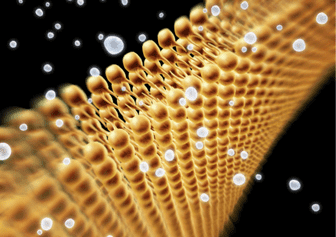Lipids
Similar to carbohydrates and proteins, lipids are used as an energy source in organisms. They also play important roles as the main building blocks of cell membranes and as signaling molecules. Lipids are also utilized in drug delivery systems (DDSs) for delivering drugs into a living body.
Product Line-up
More Information
Properties and roles of lipids

Lipids are molecules that consist of long chain fatty acids or similar hydrocarbon chains and are present in a living body or derived from an organism1). They are insoluble in water but soluble in organic solvents such as benzene.
The fatty acids that compose lipids are amphipathic molecules consisting of hydrophobic hydrocarbon chains and hydrophilic carboxyl groups. A fatty acid that does not have a double bond in the hydrocarbon chain and has the maximum number of hydrogen bonds is called a saturated fatty acid while a fatty acid that has at least one double bond is called an unsaturated fatty acid. The structure of the hydrocarbon chain affects the density of fatty acids and is a major factor determining the physicochemical properties of lipids.
Like carbohydrates and proteins, organisms use lipids as an energy source. It is said that the energy generated by the lypolysis of fatty acids is approximately 6-fold greater than that of glucose and provides a highly efficient energy storage for cells2). Cells store fatty acids mainly in the form of triacylglycerol composed of three fatty acid molecules linked to a glycerol molecule. Triacylglycerols are generally hydrophobic and form spherical droplets in the cytoplasm.
Lipids are also a major component of the plasma membrane. The plasma membrane are made up of amphiphilic molecules called phospholipids, which consist of a hydrophilic head containing a phosphate group and a hydrophobic tail consisting of two fatty acids. Phospholipids in the plasma membrane form a lipid bilayer, with the hydrophilic heads exposed to the outside and the hydrophobic tails joining together inside. It is also known that glycolipids that comprise carbohydrates instead of phosphate groups are contained in lipids composing the membrane and are involved in intracellular signal transduction.
In addition, steroids with a cyclic structure such as cholesterol and testosterone are also lipids. Cholesterol is a constituent of the plasma membrane and myelin sheath and serves as a hormone precursor. Testosterone, a male hormone, interacts with nuclear receptors to induce the expression of downstream target genes.
References
- “Biochemical dictionary 4th ed.” ed. by Oshima, T. et al., Tokyo Kagaku Dojin, Japan, (2007). (J.panese)
- Alberts, B, et al: “Essential Cell Biology 2nd ed.”, Garland Science/Taylor & Francis Group, (2003).
For research use or further manufacturing use only. Not for use in diagnostic procedures.
Product content may differ from the actual image due to minor specification changes etc.
If the revision of product standards and packaging standards has been made, there is a case where the actual product specifications and images are different.



